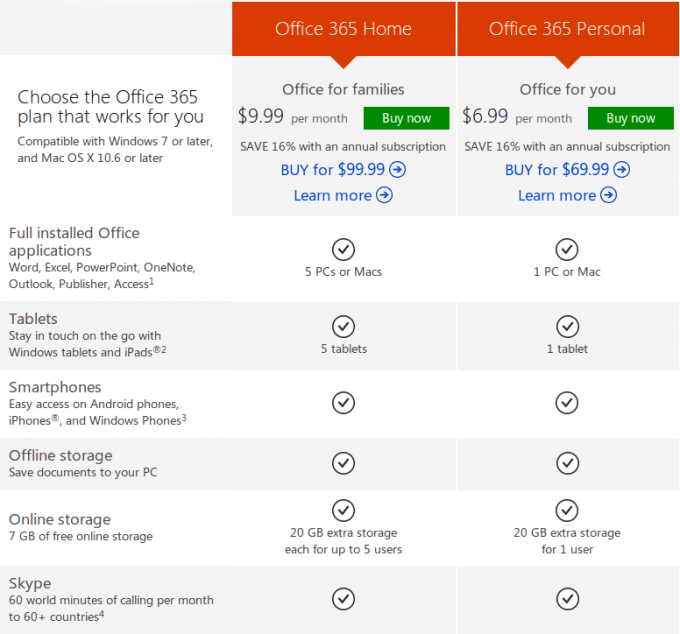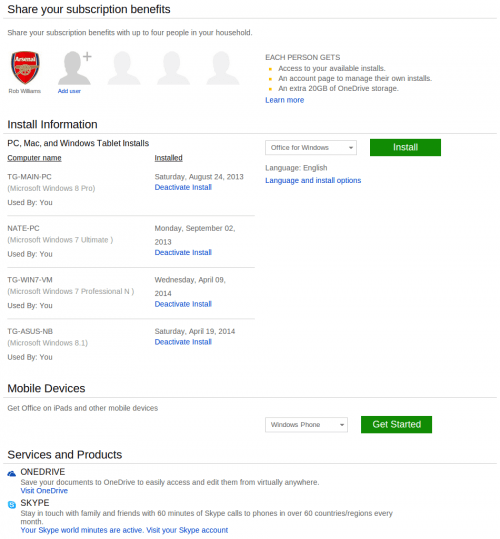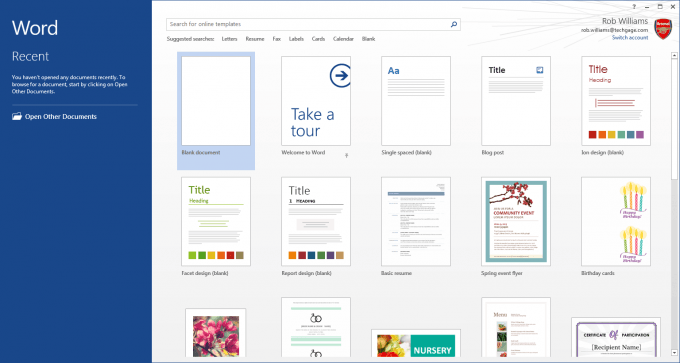- Qualcomm Launches Snapdragon 4 Gen 2 Mobile Platform
- AMD Launches Ryzen PRO 7000 Series Mobile & Desktop Platform
- Intel Launches Sleek Single-Slot Arc Pro A60 Workstation Graphics Card
- NVIDIA Announces Latest Ada Lovelace Additions: GeForce RTX 4060 Ti & RTX 4060
- Maxon Redshift With AMD Radeon GPU Rendering Support Now Available
Microsoft’s Office in the Cloud: Office 365 Review

The consumer version of Microsoft’s Office 365 service has been available for a little over a year now, and I’ve been taking good advantage of it for about just as long. At this point, I’ve spent a lot of time being immersed in the entire Office 365 experience, so read on as I relay all of my discoveries to you.
Page 1 – Introduction & Installation
When Microsoft announced in late 2012 that it would be releasing a home version of Office 365, I was a little skeptical. As someone who was getting tired of the word “cloud”, I just had little interest. I’m old-school; I like keeping offline installers around to breeze through installs, rather than download a piece of software fresh from the Internet every time I need to install it – especially with something as full-featured as Office.
Alright – last spring, I sucked-it up, aka: I caved-in. I decided to live the Office 365 dream – and with all of that experience under my belt, I now present this article.
Q: What is Office 365, exactly? A: It’s a direct replacement to a stand-alone copy of Office, but with a number of perks piled on top. In the post from late 2012 referenced above, I noted, “the company seems to be going out of its way to make the stand-alone version sound way less appealing” – and that still holds true.
As seen in the chart below, Microsoft offers home users two Office 365 options; “Personal” is designed for a single individual, allowing Office to be installed on a PC and a tablet, whereas “Home” has families in mind, boosting the total install count to 5 PCs and 5 tablets. Priced at $100/yr or $10/mo, Office 365 costs a bit less than a stand-alone license of Home & Student (~$130), which can be installed to a single PC only, and lacks the rolling-release update scheme of Office 365.
For personal use, and the attractive price of $0.00, Microsoft allows you full access to Office Online, which includes Web versions of Word, Excel, PowerPoint, and OneNote. Further, each OneDrive account gets 7GB free, which is a lot of data for documents (other data can be stored, of course).
What an Office 365 Home subscription adds to all that is: +20GB to OneDrive storage (for each of 5 users); desktop versions of Word, Excel, PowerPoint, Publisher, OneNote, Outlook, and Access; 5 installs of Office for tablets (iPad, Windows); the ability to save documents offline (yes, that’s a feature nowadays); and 60 worldwide minutes on Skype each month. For $100/yr (or $10/mo), this is quite a package, and its value will heighten when entire families can benefit from it.
If a single license is all that’s needed, then the Personal option is the better choice. It costs $70/yr ($7/mo), and includes the exact same set of features. The sole difference is that it’s tuned for just a single individual. I am sure it goes without saying, the option for a Personal license is nice, but that extra $3/mo for the Home subscription goes a long way – if the extra licenses can be used, that is.
Installing Office 365
As someone who’s cursed with a slow Internet connection, Office 365 didn’t appeal to me at first for obvious reasons. The mere thought of having to wait 2 hours for Office to download each time I wanted to install it made me feel sick. Well, this is one area where Office 365 impresses the heck out of me. It’s as if Microsoft understood where us slow net folk are coming from, because even on a meager 5Mbps connection, I can begin using Office within five minutes.
Past that, the convenience of installing Office to a PC from scratch is even easier than installing it off of a DVD. You must first visit Office.com, sign in, and click “My Account” at the top. That will bring you to a page like this:
If an install slot is still available, a green “Install” button will be available to the right. Clicking this will download a sub-1MB installer, and once it’s run, it must also be signed into. At this point, Office will begin installing, and after a couple of moments, the programs can begin to be used. The hope is that by the time you need a specific feature, it should be downloaded, and nothing should require an application restart once it’s in use.
The best part of the above image might not be too obvious: “Deactivate Install”. Anyone who’s been reading Techgage for a while might be aware that me and Microsoft activation schemes don’t go well together. Well, there’s no such issue here. You can deactivate an install at will, and install fresh to another PC to take its spot. It’s total freedom, and I can’t help but wish Windows had the same sort of mechanic (at least let me deactivate, Microsoft!)
Real-time installation of Office 365 on slow Internet connection
I’ve installed Office 365 about ten times in total, and throughout all of those times, I didn’t run into a single issue. I even tried to ruin an install once on purpose in a virtual machine, by cutting the power in the middle of the install. It merely picked-up where it left off after the next boot.
At the top of the account page is a user panel, and each person added there will earn their extra 20GB of OneDrive storage. To claim the Skype minutes, a link at the bottom of the page must be used. After signing into your Skype account, the credit will be applied automatically.
As the screenshot above highlights, Office 365 applications are identical to their stand-alone counterparts. Because this service has a rolling release mechanic, these applications will be updated as soon as Microsoft has newer versions available; this applies to major updates as well. If Office 2015 comes out next year, or 2016 the year after, Office 365 will reflect it when the software is released.
Support our efforts! With ad revenue at an all-time low for written websites, we're relying more than ever on reader support to help us continue putting so much effort into this type of content. You can support us by becoming a Patron, or by using our Amazon shopping affiliate links listed through our articles. Thanks for your support!








